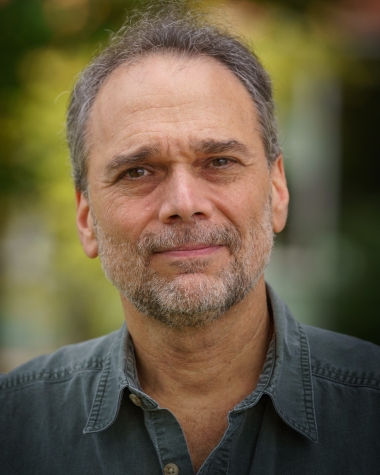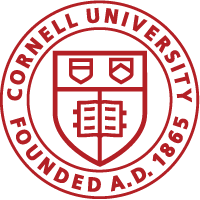Cornell University, College of Veterinary Medicine, Ithaca, New York (July, 2016-present)
Jay Hyman Endowed Professor of Wildlife Health & Health Policy, a member of the Department of Population Medicine and Diagnostic Sciences, with a focus on the conservation of free-ranging wildlife. Responsible for developing and helping to apply science-based landscape-scale approaches to conservation, particularly in terms of policy guidance to address challenges at the interface of wildlife, agriculture and other types of land use, and people. The scope of work includes engagement with various national and international governmental and non-governmental partners, and being a key resource for the University on issues related to wildlife health, One Health, and Planetary Health. Wildlife, livestock, and human diseases will continue to have a significant impact on the development of sustainable land uses, protected areas, transboundary natural resource management, other biodiversity conservation approaches, and of course, livelihood opportunities around the world. Experience at the interface of wildlife health, domestic animal health, and human health and livelihoods has demonstrated that a One Health approach can build new constituencies for conservation and strengthen existing ones, while mitigating key threats to conservation success. The Hyman Professorship involves a commitment of approximately 70% of my time to science policy and research, 10% to teaching, and 20% to service, including gradual development of a center focused on launching and growing programs and policy initiatives that cut across regional and disciplinary boundaries to solve environmental and related health challenges via One Health / Planetary Health approaches.
Wildlife Conservation Society (WCS), New York, New York (July, 2013-June, 2016)
Executive Director, Wildlife Health & Health Policy Program (annual multi-million dollar budget and ~50 staff around the world), based outside of Washington, D.C. Responsible for managing all of the WCS Global Conservation Program's work in the health realm, the Executive Director, Wildlife Health & Health Policy is responsible for delivering on WCS’ mission to save wildlife and wildlands. Responsibilities include: ensuring that WCS addresses the issues raised by wildlife health concerns to achieve better conservation results; identifying, developing, and growing programs, projects and policy initiatives that cut across regional boundaries and address the key threats and opportunities that a One Health approach identifies; being a key spokesperson for the Society on issues related to wildlife health and One Health, speaking at public events, academic institutions, and across the conservation community to maintain and expand WCS’ authority as a leader in the wildlife health field; being a visionary leader and helping to implement the goals and objectives of the Society’s conservation efforts while ensuring that a One Health approach meshes well with the overall strategic vision of the Society, and with the specific conservation targets (places, species) that are the Society’s priorities; being a strong fundraiser via both private and public sources.
Wildlife Conservation Society (WCS), New York, New York (December, 2002-June, 2013)
Senior Policy Advisor and then Director, Wildlife Health Policy, based outside of Washington, D.C. As a member of the Field Veterinary Program, responsibilities include: provision of advice and development of policy recommendations for U.S. and foreign governments on free-ranging wildlife health and management issues; development of good working relationships with government agencies, non-governmental organizations, and other parties involved in promoting the health of free-ranging wildlife nationally and internationally; training of foreign professionals in policy development and implementation related to free-ranging wildlife health issues; briefing or informing relevant agencies and organizations on issues of free-ranging wildlife health critical for conservation; reviewing and assisting in WCS field programs and those of grantees to facilitate appropriate wildlife health policy development and implementation; public speaking, professional writing, and provision of technical recommendations and advice in a variety of fora; and identification of potential sources of support for priority programs and development of contextually relevant project proposals.
World Wildlife Fund (WWF), Washington, D.C. (July, 2000-November, 2002)
Director, Field Support, Species Conservation Program and (June, 2001- November, 2002) Acting Vice President, Species Conservation Program. Responsibilities include: the coordination of international endangered species conservation programs and wildlife policy initiatives anchored by a landscape-based (ecoregional) approach in Asia and Africa; development and management of projects associated with WWF’s priority species of global concern, particularly efforts focused on African and Asian rhinos and African and Asian elephants; cultivation of synergistic linkages between the Species Conservation Program and other WWF programs, departments, and network field offices; analysis of programs and policies to maximize efficacy at addressing key threats; identification of emerging wildlife policy and species conservation challenges; advancement of key policy initiatives via strategic advocacy targeted at government agencies, other conservation organizations, academia, private sector interests, donors, and the public; provision of technical recommendations and advice in a variety of fora; and identification of potential sources of support for priority programs and development of contextually relevant project proposals.
World Wildlife Fund (WWF), Washington, D.C. (July, 1998-June, 2000)
Senior Program Officer for Species Conservation. Responsibilities include: the coordination of international endangered species conservation programs and wildlife policy initiatives; development and management of projects associated with WWF’s priority species of global concern, particularly efforts focused on African and Asian rhinos and elephants, and tigers; cultivation of synergistic linkages between the Species Conservation Program and other WWF programs, departments, and network field offices; analysis of programs and policies to maximize efficacy at addressing key threats; identification of emerging wildlife policy and species conservation challenges; advancement of key policy initiatives via interaction with government agencies, other conservation organizations, academia, private sector interests, donors, and the public; provision of technical recommendations and advice in a variety of fora; and identification of potential sources of support for priority programs and development of contextually relevant project proposals. Promoted to Director in July, 2000.
AAAS Science and Diplomacy Fellowship with USAID, Washington, D.C. (September, 1996-June, 1998)
American Association for the Advancement of Science Fellow serving as a Biodiversity Program Specialist at the U.S. Agency for International Development. Selected for a post in the Environment Center’s Bureau for Global Programs, Field Support and Research. Responsibilities include the planning, monitoring, and field support of sustainable development programs that have major environmental / biodiversity conservation components. Emphasis is on ground-truthing Integrated Conservation and Development Projects, critically evaluating sustainability, protected area / buffer zone strategic planning, ameliorating conflicts at the wildlife / livestock interface, and linking wildlife research to management needs. Projects require collaboration among a diversity of governmental and non-governmental organizations. Program / partner agencies / objective:
-Partnership for Biodiversity / US Dept. of Interior, Peace Corps / Support high biodiversity sites around the world through technical assistance packages and training.
-Rhinoceros and Tiger Conservation Act Fund and African Elephant Conservation Act Fund / USFWS / Ecosystem-focused support to specific conservation efforts in range countries.
-CITES Interagency Committee / USFWS, Dept. of State, other USG agencies / Help develop US positions for CITES Conference of Parties (COP) 10 and attend the COP as a member of the US Delegation, technical support team.
-Mission Consultation / USAID Field Missions / Technical support for biodiversity activities in USAID-assisted countries.
Field highlights have included working with various wildlife management authorities (Ecuador- Inefan; Tanzania- TANAPA and Wildlife Division; Nepal- DNPWC) along with local and international NGOs.
Fossil Rim Wildlife Center, Glen Rose, Texas (August, 1994-May, 1996)
Director of Animal Health Services at the 3,000 acre Center which serves as habitat for 1,500+ animals of over 40 species. (The collection had increased in size since my internship.) My program emphasized advanced field immobilization protocols, preventative medicine, conservation-oriented research, and international training/outreach. Most species are in a semi-free ranging situation, and management style reflected a commitment to practical field-oriented conservation. I directly supervised one associate veterinarian, two veterinary technicians, one administrative assistant, as well as rotating senior veterinary students.
Botswana Department of Wildlife and National Parks, Botswana, southern Africa (January, 1992-January, 1994)
Two year contract directly with the Government of Botswana to serve as the first Wildlife Veterinary Officer for the Department of Wildlife and National Parks. Filling this new post meant developing a Wildlife Veterinary Unit literally from “nothing.” Responsible for: developing all of the administrative infrastructure needed to serve the wildlife veterinary needs of the nation; obtaining and maintaining all necessary field and laboratory equipment; developing all capture, safety, animal welfare, and data collection protocols needed; performing all wildlife immobilizations in the country for Departmental research and/or management purposes (including problem predator work); providing chemical capture services for approved private researchers working in national parks and reserves; developing and completing research projects; training field officers in safe wildlife capture/sample collection and evaluation techniques; performing disease outbreak investigations, and providing extension services to game farmers/ranchers. Species worked with include: buffalo, cheetah, wild dog, eland, elephant, giraffe, impala, kudu, leopard, lion, ostrich, white rhinoceros, springbok, tortoise, vulture, wildebeest, and zebra. All animals handled underwent a thorough biomedical evaluation as part of the Unit’s program to establish a wildlife health database/set of clinical normal values/serum bank. I directly supervised two Game Wardens (assistant wildlife biologists), one Assistant Game Warden (veterinary assistant), and one volunteer veterinarian serving as a technician/field assistant.



